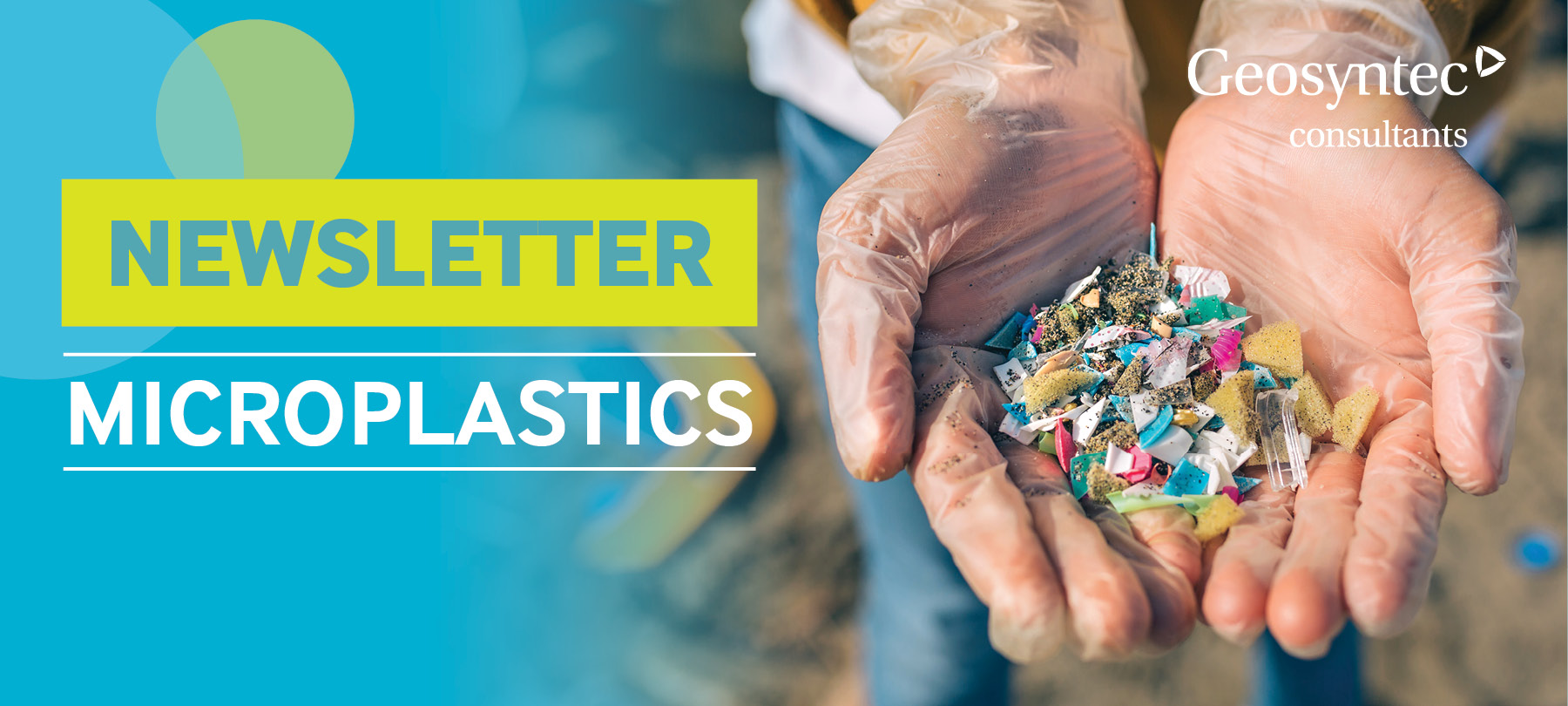Microplastics Newsletter: Q4 2024

ITRC to Host Webinar on the Overview of the Tire-Derived Chemicals 6PPD & 6PPD-quinone Guidance Document
The Interstate Technology and Regulatory Council (ITRC) will host a webinar on January 14th, 2025 which will summarize the ITRC Guidance Document on tire-derived chemicals 6PPD and 6PPD-quinone (6PPD-q). These chemicals, used as anti-degradants in tires, have been identified as contaminants of emerging concern due to their toxicity to aquatic species and potential human health impacts. The session will cover topics such as the background and use of 6PPD in tires, its transformation into 6PPD-q, the occurrence, fate, and transport of these chemicals in the environment, toxicity, and the current regulatory framework surrounding these contaminants. For those interested, registration to the webinar is open and can be accessed here.
Microplastics and Per- And Polyfluoroalkyl Substances (PFAS) Detected in Landfill-Wastewater Treatment Systems
A study published by Prada et al. quantified microplastics and PFAS in landfill leachate, wastewater treatment plant (WWTP) influent and effluent, and biosolids from four landfill-wastewater treatment systems in Illinois. A total of 27 grab samples were collected over the course of two years; samples were analyzed for 13 target PFAS and particle count and mass were quantified for microplastics. PFAS and microplastics were detected in all samples, with PFAS concentrations notably higher in landfill leachate compared to wastewater influent, while concentrations of microplastics were similar in magnitude. PFAS and microplastics concentrations were significantly lower in WWTP effluent compared to influent, with PFAS removal being more variable. This study gives insight into the fate of PFAS and microplastics with regards to wastewater treatment plants, and highlights areas for potential improvement within landfill-wastewater treatment systems to ensure these contaminants are not reintroduced into the environment.
New and Weathered Microplastics Can Form Ice in Water Droplets
Microplastics in the atmosphere may help form ice and clouds in a manner similar to dust particles. Researchers tested four common types of plastic—low-density polyethylene, polypropylene, PVC (polyvinyl chloride), and PET (polyethylene terephthalate) —to see if they could cause water or ice to form. They aged the microplastics using UV light, ozone, and chemicals to mimic real-world conditions. The study, published by the American Chemical Society, found that all the plastics could help ice form, but aging reduced this ability for most, —except for PVC. PVC's ice-forming ability actually increased, likely because aging smoothed out flaws in the material. While the study showed microplastics can influence cloud formation, the concentration needed to have a measurable effect is still unknown.
Microplastics Generation from Food Packaging
A recent study investigated how low-density polyethylene (LDPE) food packaging degrades under simulated conditions such as heating, freezing, ultraviolent (UV) light exposure, and microwave use. These treatments lead to significant generation of microplastics (10–5000 microns [μm]) and plastic-derived dissolved organic matter (DOM). Researchers observed rapid microplastic formation from all simulated conditions, with UV exposure causing the highest release. This study highlights the need for further evaluating plastic packaging during food preparation and storage as a source of human exposure to microplastics.
Battelle 2025 Sediments Conference holding in January in Tampa, FL
Battelle will be holding the 2025 Sediments conference January 27-30, 2025, in Tampa, FL. The four-day conference will kick off with half-day short courses and full day short courses on Monday. The program agenda includes five platforms dedicated to various sediment contaminant related topics, including microplastics. Tailored topics of interest include sampling methods/analysis, monitoring and risk characterization for management strategies, environmental assessment, remediation, and site management. Several staff from Gradient and Geosyntec will be presenting at the conference on various topics, including microplastics in sediment. Registration is still open for anyone interested in attending the conference.
Regulatory Roundup
U.S. Federal and State
- California’s Governor (Gavin Newsom) recently signed into law SB 1046 and SB 1053. These laws build on earlier legislation, such as SB 270 and Proposition 67, which initiated California's leadership in plastic reduction. Under SB 1046, beginning January 1, 2025, stores may only provide customers with pre-checkout bags (such as bags used for produce, meats, etc.) that are recycled paper bags or compostable bags. Under SB 1053, beginning January 1, 2026, stores will only be allowed to distribute recycled carryout paper bags for a fee of at least 10 cents.
- On November 25th, 2024, over 170 environmental groups filed a petition to the United States Environmental Protection Agency (USEPA) urging the establishment of a microplastics monitoring program for drinking water. The petition requests the USEPA to include microplastics on the Sixth Unregulated Contaminant Monitoring Rule (“UCMR 6”) promulgated under the Safe Drinking Water Act (“SDWA or “the Act”) by 2026.
International
- Between November and December, representatives from 170 countries met in Busan, South Korea, for the fifth session of the Intergovernmental Negotiating Committee (INC-5) to develop a legally binding treaty on plastic pollution. While the session did not result in a finalized agreement, progress was made with the adoption of a “Chair’s Text,” which will guide the next round of negotiations in 2025. Key issues remain unresolved, including production caps, hazardous chemical guidelines, financial mechanisms, and implementation measures. Scientists played a pivotal role in shaping discussions by emphasizing the urgency of addressing the full lifecycle of plastics and advocating for a robust treaty. The next session, INC-5.2, will aim to address these challenges and move closer to a comprehensive agreement.
Litigation
- A U.S. judge dismissed a lawsuit accusing a food-products corporation of misleading consumers by labeling their bottled water as "natural," despite the presence of microplastics from its bottles. The judge ruled that FDA regulations define "spring water" as water from a natural spring and do not address microplastics, making the labeling compliant. The plaintiffs, who claimed they paid a premium for what they considered a "non-premium" product, have until December 6, 2024, to amend their complaint.
